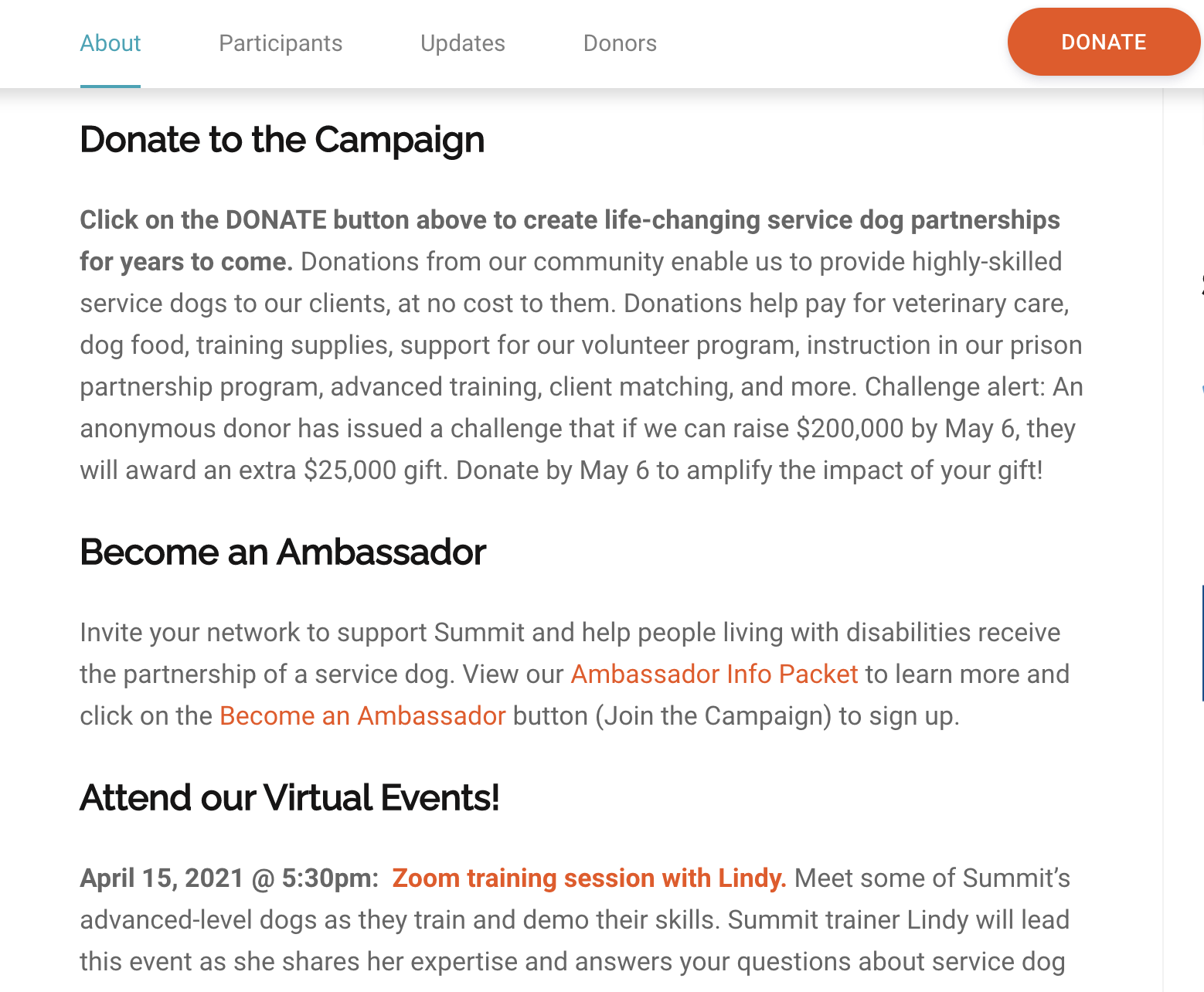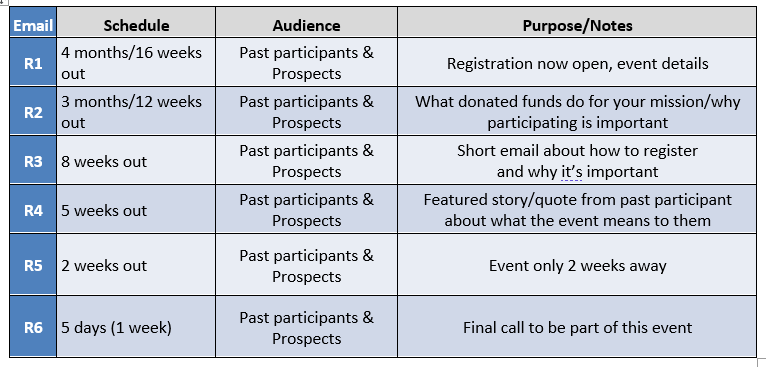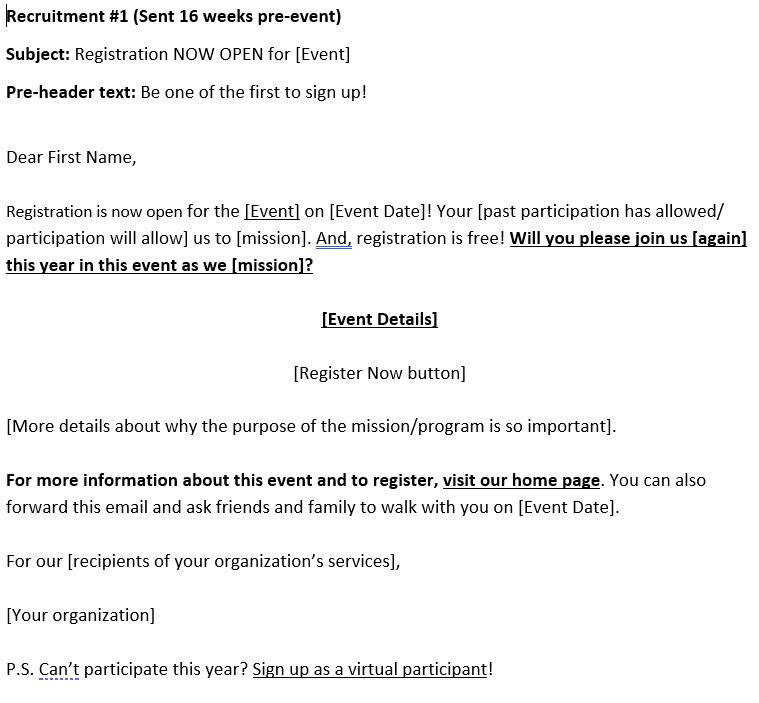by Mark Becker, Founding Partner, Cathexis Partners
These days, peer-to-peer fundraising campaigns and events take many forms: virtual runs/walks/rides, tribute/memorial campaigns, virtual drives. The list goes on.
But no matter what types of peer-to-peer fundraising campaigns or events you’re running, they all require one key thing to be successful: participants. So how do you get more supporters to sign up as fundraisers?
Here are seven steps to help you recruit more participants for your next peer-to-peer campaign or event:
1. Create Powerful Messages
To get your supporters excited about joining your event and helping you raise funds, you need a compelling story that’s easy to share with friends and family. Make sure your messaging addresses these questions:
- What makes our organization unique?
- What impact are we having on our mission?
- What photos or images best reflect our impact on our mission?
- How is our peer-to-peer campaign solving a problem?
- How do we want people to feel about our mission and our campaign (emotionally touched, inspired, outraged)?
- What will the funds raised from the campaign help our organization accomplish?
- How can participants help us reach our fundraising campaign goals?
- What compelling statistics can we include?
Here’s a look at how Summit Assistance Dogs communicated their messaging on their peer-to-peer fundraising campaign site:

2. Make Your Story Easy To Understand And Share
A surefire way to lose people’s interest in signing up to help raise funds is to make it hard for them to find or understand information. Evaluate your website and emails, and make sure the messaging for your peer-to-peer fundraising campaign is:
- Easy to understand — Your messaging should make it obvious why your organization has launched the peer-to-peer fundraising campaign.
- Easy to convey — You may be solving a complicated problem, but your message should be simple enough for your supporters to explain to others.
- Easy to share — Sharing is the root of peer-to-peer fundraising, which means your peer-to-peer fundraising tools should make it easy for participants to share your message.
Here’s an example of how one peer-to-peer fundraiser shared Summit Assistance Dog’s story with their networks on their page:

3. Analyze Your Data
Take time to gather, analyze, and use data from your past peer-to-peer campaigns or events to uncover trends and find new opportunities to improve your recruiting efforts. For example:
- Review funds raised based on your top fundraisers’ connection to your organization. Understanding more about them can help you target your recruitment efforts with greater precision.
- Plan to use data from previous campaigns or events to add personalized notes to your recruiting emails. This approach can help you tap into the loyalty of past participants. For example, look up your previous years’ results, and plan to add a personal note to your recruiting emails, such as: “Thank you for raising $X last year.” or “Thank you for being one of our top 50 fundraisers last year.”
4. Do A “Soft Launch”.
Consider doing a soft launch of your campaign in which you have staff members, board members, and your most involved constituents register to begin fundraising ahead of the official launch.
Then, when other constituents, frequent site visitors, or others come across the campaign, they’ll see that it already has interest.
A soft launch can also help to identify any bugs or confusion with registration or donation processes before your campaign really kicks off.
5. Build Recruitment Emails
Create a calendar for recruitment emails to begin signing up participants for your peer-to-peer fundraising event or campaign. For each email, plan to send targeted emails with slightly different messages to past participants and those on your list who have not participated in the past.
Here is a sample of what your recruitment email calendar might look like for a peer-to-peer fundraising event:

Your list of targeted emails will vary based on your campaign or event. Here are some messages to consider sending:
- An early announcement to those who have participated in the past.
- A “registration now open” email, with personalized messages for past participants and prospects.
- A series of personalized messages to past participants and non-past participants that encourage them to register.
- An email (or “P.S.” messages in your emails) asking your most active fundraisers to ask their friends to sign up to raise funds as well. (For event registrations that include a fee, consider providing a friends and family registration discount code.)
Be sure to exclude people who have already registered from future recruitment emails.
Sample “Registration Now Open” email

These are just some ideas for recruitment emails. The key is to segment your audiences and tailor a series of messages to them to ensure they make the most impact.
6. Automate Your Recruitment Emails.
Work toward automating your email communications so you have more time to focus on optimizing other aspects of your peer-to-peer fundraising campaign. Just imagine the time savings if you can create a communications calendar and schedule recruitment (and other) emails to send automatically.
Just remember that even if your communications are automated, you should be prepared to adjust your campaign messaging as needed, based on recruitment and fundraising trends identified through reports and dashboards in your peer-to-peer fundraising software platform.
Learn more about crafting your peer-to-peer communications plan with this free webinar.
7. Reach Beyond Your List
Think about other communications channels that reach beyond your constituent list: social media, your website, signs at your organization’s events, public service announcements, local morning TV news shows — all of these channels can be used to announce your campaign and recruit participants.
Also, look at other groups who might be interested in supporting your campaign:
- Start with companies that are sponsoring your campaign. Check with their human resources department to see if you can visit the company (virtually or in person) to let their employees know about your campaign.
- Visit or call shops in the vicinity of your event. (Virtual fundraising campaign? Don’t worry! Simply apply this suggestion to shops around the physical location of your organization.) Ask if they’d like to start a team or join a community team that you’ve created for the campaign as a way to spread goodwill and get involved. If creating a team isn’t their thing, ask to leave information about the campaign for their employees or customers.
- Rinse and repeat with schools, churches, synagogues, mosques, civic groups, girl/boy scout troops, sororities, fraternities, etc.
Get Started With Peer-to-Peer Fundraising
If you need more ideas or an extra set of hands for your peer-to-peer fundraising events or campaigns, contact Cathexis Partner to learn more about how the team can help.
Looking for a way to easily run your peer-to-peer campaign online? CauseVox is the easiest way to create your peer-to-peer fundraising campaign for your nonprofit. Learn more about the CauseVox peer-to-peer fundraising platform.




